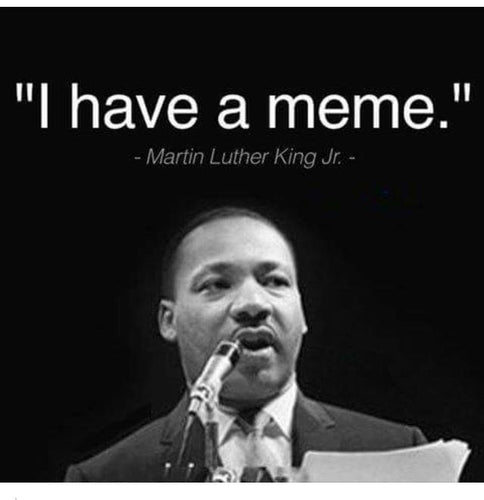

· By Caroline Black
Positive Trolling Through Nonviolent Resistance? The Legacy of Martin Luther King Jr.

In the United States, we celebrate the birthday of Reverend Dr. Martin Luther King Jr. by skipping school as a society. Few people outside of presidents have their own dedicated holiday, but King was able to finagle that. This had a lot to do with his powerful and tragically curtailed legacy.
When we think of Martin Luther King, we think of a very peaceful, wholesome person, a relic of a past that no longer exists. The marchers in Alabama and Washington, D.C., are now just ghosts in the history of the world. Passively, they allowed themselves to be the victims of state-backed violence, and one by one, these people were imprisoned.
In a world where critical race theory and TikTok face the ban hammer of the United States government, it’s important to know a vital part of King’s philosophy that we can take away with us today.
While King, revered, is often portrayed as a cutesy, peace-loving dude who, while very powerful, brought people together because he played on their sentiments, this is not the entire picture. King was a highly educated man (how did he get the “Dr.” after all?) who carefully studied both Christian theology and the writings and actions of Gandhi.
After years of study, and after being imprisoned again and again for advocating and demonstrating on behalf of those Jim Crow wanted to squash under its racist boot, King ramped up his action plan by way of his philosophy.
The nonviolent resistance that was employed during the Civil Rights movement of the 1950s and 1960s was powerful enough to enact change. It started with people who refused to move from their seats on the bus so that other people could take the seat they had a right to, by virtue of the color of their skin. Then, the bus boycotts. Thousands of people refused to use the bus system at all, crippling it. Those involved took the money from the oppressive systems, and they effectively shut them down.
To obtain the freedoms that were supposedly theirs a hundred years prior with the end of slavery in the Emancipation Proclamation (Juneteenth), African American men and women started sitting at diner counters where only white people were served. They started entering white spaces, no longer afraid of the consequences.
And this is the important piece of King’s philosophy when it comes to nonviolent resistance. In one of his most important works, Why We Can’t Wait, King describes the process of nonviolent resistance of an oppressor that sounds incredibly modern:
“Instead of submitting to surreptitious cruelty in thousands of dark jail cells and on countless shadowed street corners, he [the protestor] would face his oppressor to commit his brutality openly–in the light of day–with the rest of the world looking on.”
For King, there was more than a sentimental “turn the other cheek” bent to this philosophy. King, a Baptist minister, knew the power of the theology of his religion when it came to the impact of nonviolence, but it didn’t stop at “Jesus did this, and so shall you.” The idea was very practical.
During this time period, news media became more widespread and easily accessible than ever. People not only had the ease of the radio, the newspaper, and the silver screen, but they also were beginning to have the convenience of a very important piece of technology: the television.
With transportation and the dissemination of information easier to use than ever, people began filming and photographing the world around them from the journalistic lens faster than ever. And so, when King and other greats of the era marched across the bridge from Selma to Montgomery, Alabama, and were soon assailed by a police force with their dogs and clubs, the violence that ensued could not hide in the darkness from whence it came.
People were beaten brutally by state-approved police. They were then taken to jails, where the peaceful protestors, doing nothing to defend themselves, filled the cells. These protestors braved their health and their very lives in order to give themselves and their children a better future and a place in a country in which their ancestors had resided for centuries.
In a sense, nonviolent resistance is one of the best forms of trolling. The protestors of that era did nothing other than march in solidarity with each other. They dressed in their Sunday best and walked the miles to make a point. And when they were waylaid and beaten, they mentally shrugged and showed the world who was the real bad guy.
And it was this public shame that helped enact change faster than lawsuits or other forms of resistance. To have the world watching the senseless violence on behalf of the state was nearly as powerful as a vote.
And so, we can return to the impending TikTok ban. Now that we have small journalistic devices in our pockets, we have the ability to expose injustice now more than ever. While we won’t pretend that TikTok is a journalistic machine, it does have the ability to put into the hands of the people the means by which to expose injustice.
The world is watching again. Let’s take a moment to remember the legacy of Martin Luther King Jr. and consider the soul of nonviolent resistance, and the importance of bringing evil to the public eye.
Our blog posts are written by C.M. Black, whom you can follow on Facebook and Bluesky.










